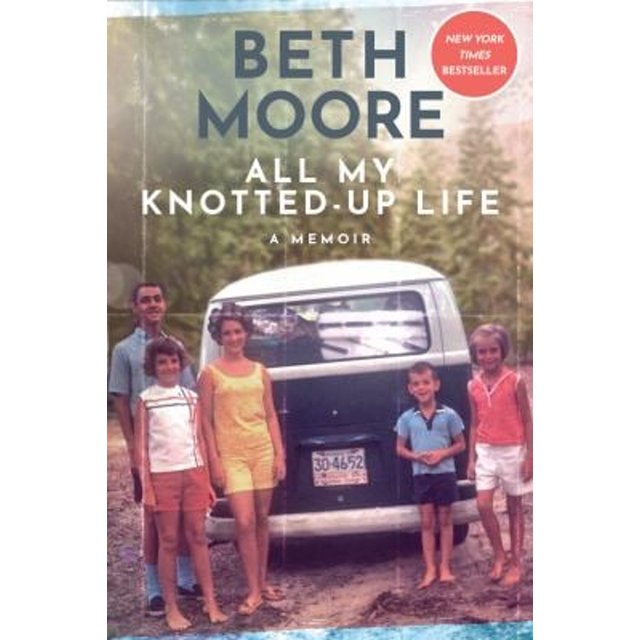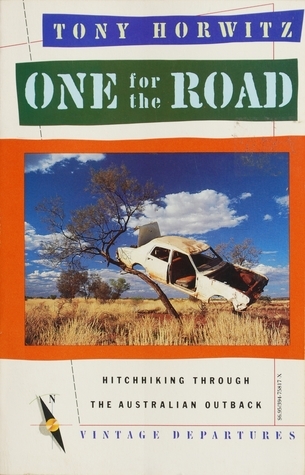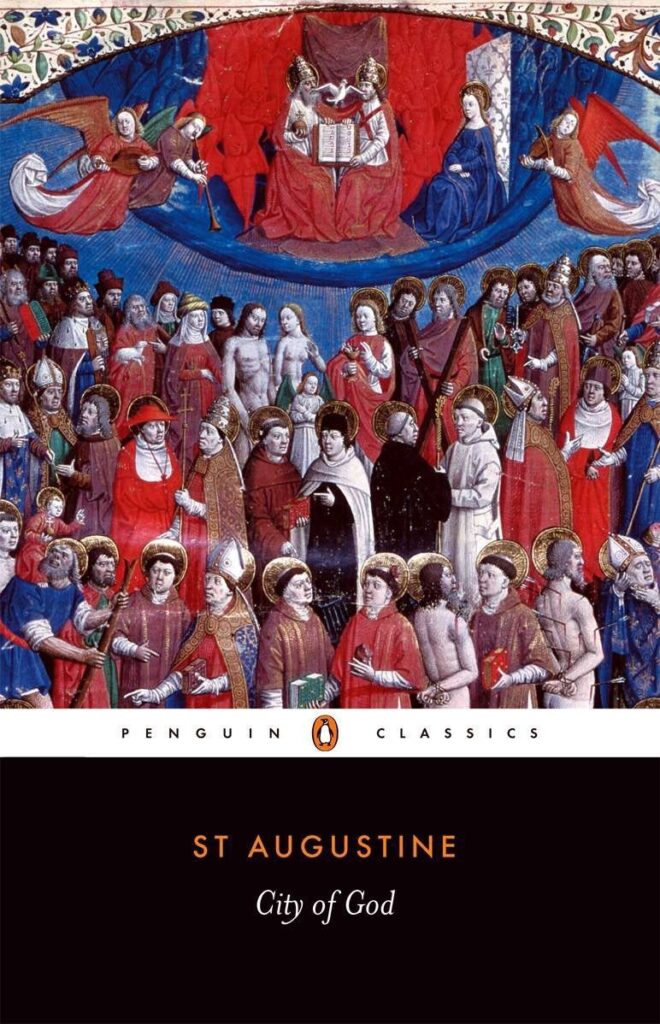I’m reviewing three books. One a faith memoir, another a humorous travelogue, and one a classic work that has probably influenced our society more than we can image while also being a work few can claim to have read. There’s something here for everyone
Beth Moore, All My Knotted-Up Life: A Memoir

(Carol Stream, IL: Tyndale, 2023), 295 pages plus 8 pages of color prints.
Beth Moore has been on my radar for at least twenty years. Women groups at churches I’ve served have used her Bible Study materials. Over the past eight years, I have witnessed from afar her challenges within the Southern Baptist and evangelical community as she boldly spoke out against Donald Trump after his remarks about grabbing women in private places were made public in 2016. And later, I watched from a distance as she both challenged the Southern Baptist for covering up sexual abuse of leaders within the denomination. Yet, while I have read some of her articles, I had not read any of her books until I picked up this memoir. I recommend it.
This is an honest and can imagine how painful the book was to write. In a way, it’s more of an autobiography than a memoir. She tells stories from her childhood and admits how the family tried to hold on to respectability while harboring dark secrets. The darkest was her father’s unwanted touching. She also writes about how she was drawn into church and even the pastor who affirmed her going into ministry as a teenager. Starting out leading women’s ministry classes and acrobatics, she grew a business into a major organization. Coming from a Southern Baptist background, she always stayed with women’s ministry and avoided any leadership position which would undermine pastors (whom she assumed should be male).
Moore: politics and leaving the Southern Baptist Church
Moore also avoided politics until Bill Clinton had his White House affair. This caused her to leave the Democratic Party for the Republican Party. In this manner, she followed the crowd as evangelical leaders across the county openly condemn Clinton. She expected the same response after the release of Trump’s Access Hollywood tapes. It shocked her that instead, many evangelical leaders circled the wagons around Trump.
This memoir tells the story of her coming of age, her marriage, her relationship to her parents, the building of a ministry, and how she came to the decision to leave her the Southern Baptist Church. It was a hard break as she loved the denomination who had nurtured her. The book ends with her and her husband finding a new home within an Anglican Church. While there have been many knotted-up challenges in her life, through it all she always found solace and strength in her Savior, Jesus Christ.
While there are troubling events described in this memoir, Moore’s writing is a pleasure to read. And amongst the pain, there is also laughter. The reader will meet a woman of faith and conviction.
Tony Horwitz, One for the Road: An Outback Adventure

(1987, audible 2020).
I picked up this book from an Audible Sale. Having read and enjoyed three of Horwitz’s books, I thought it would be something nice to listen and laugh while driving. Years ago, I had read Bill Bryson’s, From a Sunburnt County, and was thinking this book might further expand my knowledge of Australia, while providing humorist distractions. It didn’t take long for me to realize the book I was listening to was written long before Bryson’s.
Horwitz was a funny writer. The first book of his I read was Confederates in the Attic. I read most of that book on a cross-country flight. I kept trying, but without much success, to muffle my laughter. Everyone seated around me wanted to know what book I was reading! While this book provides many funny moments (along with a few crude jokes told my travel companions while he’s on the road), it’s not nearly as funny as his later works. As I said, I thought this book was a newer book. After listening just a bit, I found myself googling Horwitz and discovered the book was his first, published in the late 1980s. His writing became tighter over time! Sadly, I also learned that Horwitz had a massive heart attack and died in 2019. He was only 60 years old, just a little younger than me.
First journey into the Outback
In this book, Horwitz has moved to Australia, his wife’s home. It’s in the mid-1980s and they both take positions with a newspaper in Sydney. But Horwitz’s wanderlust doesn’t fade and after a year, he obtains permission from his editor to head out into the bush to see Australia. It’s 1986, and Haley’s Comet is big in the news. Obviously, the comet wasn’t any brighter in Australia than it was here in the states. But the place to see the comet was supposed to be Alice Springs, in the center of the continent. Horwitz sets off by hitch hiking (in the summer, no less). He’s later assigned an article on the conflict between natives and tourists at Ayer’s Rock (now known as Uluru). Renting a car, he drives over to the site and on this way back rolls the car. Luckily, he is bruised, but okay. He flies home, but a little later works out a deal for a month traveling and sets off again.
A month in the Outback
Hitchhiking in Australia is a bit different. Instead of using one’s thumb, the hitch hiker sticks out a finger. But it’s the same in that one must be careful. While he’s traveling there are reports of people killed by hitchhikers, which makes his attempt to get a ride even more difficult. He travels across the country to Perth and then heads along the coast to Darwin. While he has been warned to avoid the Blacks (abiogenies), he finds them hospitable. In one case, they trust him enough to hand him the keys to their junker car along with a handful of bills and have him drive into town to buy beer! In places it was against the law to sell bear to abiogenies, and at other establishments, proprietors refuse to sell to them.
It seems Horwitz’s travels focuses on drinking. In remote areas, people measure distance not by miles or kilometers, but the number of beers consumed. The amount of alcohol consumed while driving is frightening. And people also drink at home and in pubs. Darwin, at the time, had the highest beer consumption in the world, 58 gallons per person! In another town, the authorities tried to reduce drinking on Sundays by passing a law that a pub could only be open for five hours. So, the pubs came together and staggered their hours so that the day was covered. This created a weekly “pub crawl,” as folks went from one to another, every five hours.
While traveling, Horwitz encounters those who work with livestock, in mining and oil exploration, fishermen (and he even spends a day fishing for crayfish) and pearl divers. In places he finds lots of prejudice against natives and immigrants, but in other places find people working together and getting along with one another.
Passover in the Outback
One of the more interesting stories occurred in Broome, a town along the northwest coast. Horwitz, who describes himself as a secular Jew, realized Passover was coming up. Wanting to share the feast with other Jews, he asks around. No one knows of any Jews, but someone suggests he speak with the local Catholic priest. The priest points him to a Jewish government physician. Horwitz meets the physician, who invites him to his home for Passover. Later, when there is a day of remembering those who had died in wars, Horwitz attends. The priest gives the keynote speech and mentions his encounter with a wandering American Jew, which brought a smile to Horwitz. This story, told near the end of the book, allows Horwitz to reflect on his cultural background and his desire to wander.
Recommendations
I don’t think this book is up to the standard of Horwitz’s other books. In addition to Confederates in the Attic, I have also read A Long and Dangerous Journey and Spying on the South). However, I still enjoyed it and recommended it. It’s a great first book and in it one sees Horwitz’s potential to become a laugh-out-loud travel writer. The narrator for the Audible edition is one of Horwitz’s sons.
St. Augustine, City of God

(427, Penguin Books, 2003 edition), 1097 pages, Audible translation narrated by David McCallion, 46 hours and 32 minutes, 2018.
There is one reason why I am behind on my readings for 2024. I had set a goal of 48 books and am currently six books behind thanks to slogging through this classic. I’ve listened to it all and went back and reread interesting parts. Maybe I could count this as 22 books (as Augustine did) and then I’d have already exceeded my goal! I had an old copy of this book from seminary, but it was abbreviated, with just the best parts, so I had to purchase a new copy.
City of God is a classic. In it, we see Augustine’s keen knowledge of the world. He knows the myths and legends of the pagan gods, the history of the world up to his time, and is well versed in philosophy and science. He understands astronomy including how eclipses occur. While he discounts numerology as a tool for understanding scripture, he is knowledgeable on mathematics. He discusses botany and biology, including knowing of some animals who live super hot environments which he uses as support for his ideas on hell. And he has a great grasp of the history of the world and can parallel what occurred in the Bible to what was happening at the same time in Rome, Greece, or Persia.
First half of the work
The first half of this massive work defends Christianity from the charge that Rome’s fall was due to Christians abandoning the pagan gods. Augustine spends 12 books showing how the pagan gods failed to protect other cities such as Troy. Augustine shows a keen knowledge of the pagan world in his defense. In this section of the book, he also advises Christians on how to act during such a tragedy in which many had committed suicide seeing it as preferable to torture and/or rape. Augustine encouraged his readers to trust in God even in the face of torture and death.
Second half of the work
In the second half of the book, Augustine follows the development of the two cities. He links the earthly city to Cain, which is the city for reprobate. The early city is identified with Babylon and Rome. Working through the Scriptures, he makes a case for a parallel city planned by God for the faithful, the elect. In addition to showing the development of the two cities, he also parallels much of what happens in scripture to what was happening in the rest of the world during the same period.
In this half of the work, Augustine shows his keen insight into the scriptures. While he acknowledges there is no mention of Christ in Old Testament, he lays out how Hebrew Scriptures points to Christ. It is in this section he also ties Hebrew history to the history of the larger world. Augustine makes a strong case against those who think they can predict Christ’s return. His writing on this subject makes it clear that there were many who seemed to think they knew God’s mind with their elaborate schemes plotting out the end of time. Not much has changed, has it?
Conclusion of the work
The last chapters focus on the end of history. Augustine makes a case for hell but suggests life in hell would be preferable to total annihilation. He discusses the final judgment. He also writes about the heavenly City of God coming in fulness but is reluctant to make to suggestions of what it might be like beyond what’s found in Scripture.
Augustine seems to value the body and our experiences in this world. I was surprised when he addressed praying for our enemies. While he endorses such prayers, he suggests we should not pray for those spirits (demons) who have no bodies! Augustine obviously writes from a patriarchy society, I didn’t find his writing to be anti-female, as I sometimes see him interpreted.
Conclusion
While at times this book seems to slog along, there is much to discover in it. I found myself realizing how my limited knowledge of Roman culture and history made it more difficult to fully appreciate Augustine’s insights. I don’t think the 21st Century can nurture another Augustine. Could you image today someone what could discuss history, theology, religion, along with advance astronomy, physics, biology with the brightest in these fields? This work has greatly influenced Western Culture, from politics to theology. It inspired Martin Luther and John Calvin, two of the leading thinkers of the Protestant Reformation. It should be studied.


Many thanks for sharing these books.
Always good to read your thoughts on the ones you share.
All the best Jan
Thank you. I know not all of my books are for everyone.
I’m glad you enjoyed the Beth Moore book! I have admired her for years and done many of her studies.
The City of God has been on my Kindle for a decade. I’ve read and studied a lot of history from Ancient Rome, so your comment about that inspires me to try and read it. Maybe if I make an effort to read a little every day I can get through it next year! (even if a lot of it is over my head!)
There is a “Great Course” on the book that might help your understanding of it. For modern ears, he seems to go on and on!
It’s always interesting to see what people will put in a memoir.
In a way, I have found memoirs to be my favorite genre.
You can always be counted on for good book recommendations! I’m glad you got around to Beth Moore’s book. I loved it and continue to be a fan. Have heard of Horwitz but have never read anything by him. As for the St. Augustine book, that might be one for my retirement!
Moore’s book is good. She is an excellent communicator. Augustine is a little heavy, just by the amount of words as he goes on and on. There is a Great Course on his book that I’d recommend. I also listened to it, while immersed in The City of God.
I loved Confederates In the Attic, A Voyage Long and Strange, One For the Road and also Blue Latitudes but sadly hadn’t heard of his death. What a shame.
I was shocked and sad to learn of his death. I haven’t read Blue Latitudes, but it might be on my list. Also, his book on John Brown sounds good, along with his writing from “Bagdad.” He was quite a traveler.